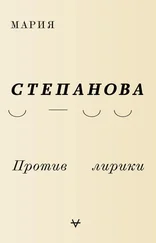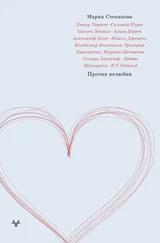On a rainy October evening, when all the passersby walked at an angle better suited to trees in the wind, I turned the corner (from Knesebeck Strasse onto Mommsen Strasse and only from Mommsen Strasse onto Wieland Strasse, as Sebald might have written) onto the street where Charlotte Salomon once lived. Salomon who, for a number of reasons, felt almost like a relative to me. She lived from her birth until 1939 in the house on this street, only leaving when she was fetched and sent to France in haste to be saved from the common fate. The worst stories of flight and salvation are the ones with a twist in the tale, the ones where right after the miraculous escape death pounces anyhow, grown thickly shaggy while waiting. That is what happened to Charlotte. But this Berlin house took a gentle leave of its child, except for perhaps the crowds of protesters she happened to see from the window with their crooked canvas banners. Back then you still could have seen such things through any window, and those fine art nouveau frames with their excellent proportions were simply doing their job. On this evening the rain was getting heavier, and a faint light could be seen inside, not lighting the whole huge apartment, just one of the rooms, and the others in a sort of twilight, so I could only really guess at the height of the ceilings and the stucco. In a scene from a book I hadn’t read since childhood, a painting in a gilded frame hung at an exhibition. In the painting was a snow-covered town, a recognizable street corner, windows lit warmly — the resemblance took my breath away — and then a sudden trick: a horse cab traveling from one side of the picture to the other, a shadow, shape-shifting. There was a movement above me on the dark balcony, a cigarette burnt bright, a wisp of smoke. It startled me, although I don’t know why.
I came to love the U-Bahn and the S-Bahn, the over- and underground railways, the orphaned smells of sweet rolls and rubber wheels, the spiderlike map of lines and connections. The glass dovecots of stations with their arched roofs seemed to suggest that you could hide under them but to me they looked temporary, untrustworthy. All the same I always relaxed when the train I was on entered the iron womb of the Hauptbahnhof as if its see-through helmet guaranteed me a moment to catch breath, a sudden eclipse before departing again into the light. There was always a crowd moving on the platform, the carriage filled instantly until no one else could get on: someone carried a bike, someone carried an impossibly huge double bass in a funeral-black case, someone had a little dog that sat so obediently it might have been posing for a black-and-white photograph. Even back then it seemed to me that all of this was happening in a past that had long ago departed, and was only now in reach if you stretched out a hand right out. Sometimes I found myself looking at the lit carriage, and me inside it as if at a distance, as if it were a model railway with tiny plastic figures sitting on the seats. The wet city circled in the window like a Ferris wheel on its side, and in it mostly the bits in between: the wastelands, underexposed scenes, and sometimes something more real and present — a column, a cupola, a cube, or a globe.
During that stagnant period in my life, everything felt close enough to touch, especially when we passed places I had once known, forgotten, and seen anew — these places gave me a brief sense of warmth. In one place I’d spent a few days in a hotel, where the guests were entertained in the oddest manner. The long narrow entrance hall was uplit with turquoise light, it was like walking down a plastic straw. At the end of the hall, where the glum residents congregated, there was a hearth with a fire burning brightly, giving off a visible heat. It was only when you reached the reception desk that you realized it was a deception: the fire burnt across the full width of a TV screen on the wall, crackling and creating an apparition of real coziness. Together with my plastic key card I was given two turquoise boiled sweets like cough drops, and I took them upstairs to the little bed-shaped room, with its basin-in-a-cupboard arrangement. The wall opposite the bed was empty of pictures and photos, there was nothing to distract from the main show: yes, there in the room a smaller but otherwise identical screen with a burning fire. The creaking and champing of the flames could be heard from the door, and, as soon as I entered, I sat down on the turquoise bedspread, as I was clearly meant to do, and looked the fire in the teeth.
In the middle of the night, still unable to find the off switch for the screen, I began to understand the little lesson the hotel’s owners had provided for their guests as a sort of undemanding but compulsory entertainment, like the poems used as decorative inscriptions on soft furnishings, or embroidered proverbs in a frame: “The early bird catches the worm.” The single screen, standing upright like a young conscript, was touched by a tiny flame, a halo at the very edge of the screen first, the forewarning of a future martyrdom. The fire grew stronger, seeming to reach out and touch my face, the flames unfurled, droning and subsiding before reaching the very top of the screen, where the bee whispering grew thicker. Then gradually the intensity dropped and the screen grew darker and then gasped softly and disintegrated into ashes and cinders. A short darkness followed, then the picture momentarily shuddered, straightened, and before me again the quick lithe fire, the resurrected image, as if nothing had ever happened to it. The whole business repeated itself over and over (the recording seemed ever more horrible, the longer it went on), and I followed it more and more attentively, as if I was trying to make out some variation, however small. Again and again the darkness gave way to the wood, repeatedly resurrecting itself from the dead.
Not-A-Chapter
Nikolai Stepanov, 1930
Fragile, crumbling gray paper, typed text.
My grandparents’ marriage was only registered in the early 1940s.
To Whom it May Concern
Rzhev Registry Office
From N. G. Stepanov
Citizen of Tver
I request the Rzhev registry office to register me as the father of the child born to Dora Zalmanovna Akselrod. I sent my identity documents as requested.
According to my information the child has not yet been registered by the registry office and this is only because I am not yet officially (please see the empty pages of my identity documents) registered as married to D. Z. Akselrod. But this is not correct.
There are no illegitimate children in a Soviet country, they are not possible. Therefore the nonregistration of my marriage cannot result in the nonregistration of my child in my name.
I am not currently able to travel to Rzhev so I am asking the registry office to fulfill my request, that is, to register me as the father of the girl, born to my wife, on the identity document I have sent you and not to delay with the official registration of the child’s birth.
Signed here: N. Stepanov
Stamp Tver Local Council (All-Union Communist Party (Bolsheviks))
Signed and witnessed by member of the Tver Local Council (All-Union Communist Party (Bolsheviks)) Comrade Stepanov
Added by hand: if the child is already registered but not in my name, in accordance with all laws I insist that the child is reregistered to me. I have no interest in simply agreeing to what suits you. N. Stepanov.
8. Rents in the Fabric, and Diversions
Every now and then a friend will send you some startling image of a face on a postcard or via an internet link. To them the face seemed to resemble yours, the features, the expression, hair, eyes, nose. When you put all such pictures side by side they suddenly reveal themselves to have nothing in common, apart from their likeness to you, the common denominator. As they say in film credits, any resemblance is purely coincidental.
Читать дальше











